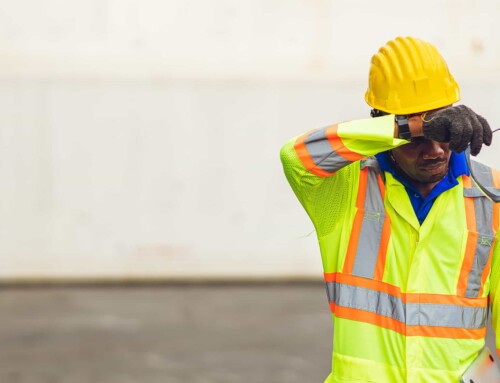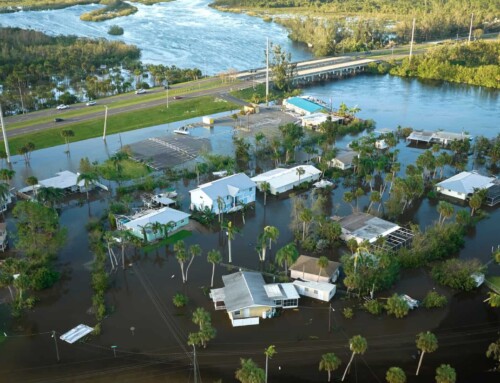Today’s risk managers tend to joke that their organizations’ logos on a vehicle are more of a target for fraudulent or inflated claims than a way to identify their fleet. The individuals who take advantage of the insurance industry typically see the organization’s vehicles as dollar signs driving down the street.

So what steps can you take to prevent a minor auto accident from turning into a questionable liability or causation claim? Here are some suggestions to pass on to your employees should they be involved in an automobile accident.
Documentation is Key
Your employees might find it strange or inappropriate to pull out their cell phones or cameras and start taking accidentphotos of the vehicles involved in the accident. However, at the scene of the accident is the best time — and, in some instances, the only time — to document exactly what happened. Even before the police arrive on the scene, encourage your employees to start taking pictures of everything, of any skid marks on the road, of damage to the vehicles, and any visible personal injuries.
Things to Avoid at the Scene of an Accident
It is also good to remind your employees of a few things to avoid while at an accident scene. One, we recommend your employees do not argue with other drivers and passengers. Unfortunately, accidents happen, but yelling at the other party only makes it worse for the overall claims experience. Second, remind your employees not to sign statements regarding fault or promises to pay for damage. Let the risk management department, as well as your claims adjuster, determine fault and damages.
Complete an Appraisal of the Vehicles Involved
Capturing all points of impact can help the investigation as well. If you have an internal fleet department that handles the damage for your organization, it is important to have your department evaluate and document all damage. If you utilize an outside vendor, have the vehicle scheduled for an appraisal as soon as possible.
In addition, hiring a field appraiser for the other party’s vehicle can sometimes assist with questionable damages or causation of injury.
Work as a Team
When an accident does happen, it is in the organization’s best interest (from a liability and best practice standpoint) to discover exactly what happened and why. This process of discovery is more commonly known as an accident investigation. Advise your employees that your insurance company or claims administrators need to investigate all allegations of injury or negligence made by other parties. The investigation may or may not be favorable to your organization, as adjusters are guided by the laws and statutes governed by the state, therefore full cooperation between the employee, their supervisor, the vehicle appraiser and the claims adjuster is paramount to the resolution of allegations. During the investigation, the employee may be asked to provide a statement more than once (to the responding officer, internally to their supervisor and to your claims adjuster), so educate them that all parties are working to expand the information provided. The goal is to resolve the matters at hand. It is not the intention of your claims adjuster to cause any undue hardship to the interviewee. It is recommended that statements are recorded to memorialize the details of the accident for liability purposes. However, many of our clients ask their employees not to provide a statement to the third party carrier.
Know Your Defenses
As a risk manager it helps if you understand your defenses.
Some states are “no fault” states. This essentially means that there is the opportunity for no one to be held at fault for the accident. This puts many real limitations on the types of recovery that can be obtained in a case. If no one is at fault for the accident, no one is likely to be ordered to pay anything to anyone else, even for serious injury.
Other defenses include comparative negligence, which assigns a certain percentage of the “blame” for the accident to each party, and each party is then ordered to pay some amount depending on that percentage of fault; and contributory negligence, which allows a defendant to claim that the other party contributed to the accident in some way, which essentially alleviates the defendant of any responsibility to pay financial recovery to the plaintiff (depending on the state).
Another common defense seen in many auto accident cases is called failure to mitigate damages. This essentially means that the plaintiff did nothing to mitigate the damages to their vehicle or the injuries that occurred to their person. For example, if they did not visit a doctor and receive treatment for injuries, the defendant could argue that the plaintiff failed to mitigate their own damages and therefore does not deserve to receive any kind of recompense payment. Because some plaintiffs exaggerate their injuries in order to receive a more favorable judgment or fail to follow the orders of their doctor, this could be a feasible defense if you are a defendant.
These tips are aimed to help reduce further liability to your employee(s) and your organization. At Johns Eastern, we want to help you protect your assets that contribute to the daily activities of your organization. Contact one of our experienced claim supervisors or managers today should you have any questions regarding your organization’s practice of accident reporting and investigation.





